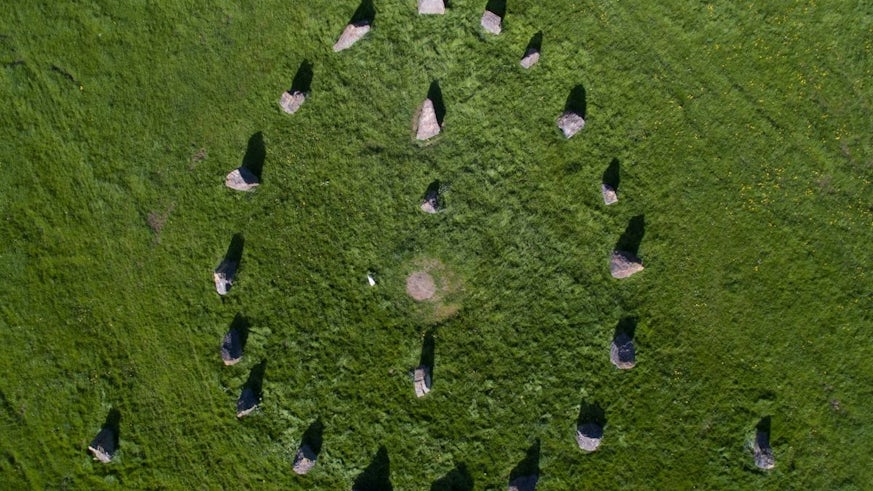Making our own monuments
20 December 2021

What Glastonbury Festival’s Swan Circle says about us
With the Winter solstice upon us, the significance of ancient stone circles such as that at Stonehenge continues to fascinate. Cardiff University experts – all experienced in engaging the public with creative activity at festivals through Guerrilla Archaeology - have investigated what Glastonbury’s Swan Circle, created less than 30 years ago, can tell us about modern monuments.
Professor of Bioarchaeology Jacqui Mulville and independent researcher Dr Barbara Brayshay set out to see what this monument means to revellers at the world’s most famous festival. Glastonbury festival site has it owns legends and myths that draw on the symbolism of the local village, a series of leylines and various symbolic ceremonies and alignments. Since 1992, the site has been home to its own stone circle. This modern monument has become by turns a gathering place, a wedding venue and a place of celebration and protest where people gather, sing and play, watch spectacular fireworks and mark sunrises and sunsets.
The team used traditional techniques to record the monument and through conversations with the Glastonbury Festival audiences were able to examine the monument through the lens of contemporary archaeology. Exploring behaviour at mass gatherings today can reveal a missing dimension in our understanding of stone circles, as explained in this short video.
Their Swan Circle research provides a fascinating window into the transmission of ideas and practices in the present and the past, an understanding of the wider views of ancient monuments and how festivals can develop their own sacred landscapes, rites and rituals which people are keen to enact and embellish.
Just like our ancient ancestors at that mythical Stonehenge event, they confirmed that people continue to find joy in great gatherings, fulfilment in the creation of meaning and legend, and have a desire to connect and reflect at this modern music festival.
Professor Mulville, who founded Guerrilla Archaeology, explains:
“As archaeologists we are fascinated in how monuments are created and used. Working next to the Swan Circle, offering workshops in the Green Crafts village each year, inspired us to investigate it further. Each year the circles significance is reinforced and reinvented by the Glastonbury audience and in this way it remains a key focal point for festival.”
“Our research concluded that the monument creates its own meaning through the people that use it, partly informed by people’s understanding of what to do at stone circle, but mostly building on the sense of place and rituals that have emerged over its lifetime.”
Their findings have been shared in Festivals: Monument Making, Mythologies and Memory their part of the 2020 virtual Glastonbury FestivalCHAT, a week-long festival-style celebration of contemporary and historical archaeology held in the first year of the Covid-19 pandemic.
The research also features as a chapter in Festival Cultures: Mapping New Fields in the Arts and Social Sciences, a new book bringing together interdisciplinary research examining the last half-century of modern arts and performance festivals as values-inflected global forms of travel, dwelling, festivity and social organisation with significant political capital.
Guerrilla Archaeology is a Cardiff-based collective of archaeologists, scientists and artists dedicated to encouraging the public to think about our present lives and future hopes by engaging with the past.
The Swan Circle project was made possible by the kind permission of the organisers and the technical support of Honorary Research Fellow Andrew Stanford of Aerial Cam.
